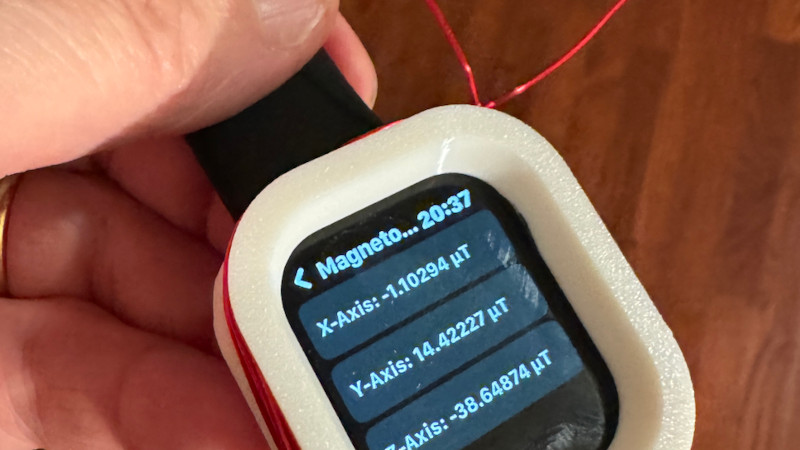Your shiny new personal electronic device is likely to be designed solely as an app platform to run the products of faceless corporations, so the story goes, and therefore has an ever smaller hacking potential. Perhaps that view is needlessly pessimistic, because here’s [JP3141] with an example that goes against the grain. It’s an Apple Watch, being used as an ammeter. How it does that comes as the result of a delicious piece of lateral thinking.
Like many mobile devices, the device comes with a magnetometer. This serves as an electronic compass, but it’s also as its name might suggest, an instrument for sensing magnetic fields in three axes. With a 3D printed bobbin that slides over the watch, and a few turns of wire, it can sense the magnetic field created by the current, and a measurement can be derived from it. The software on the watch is only a simple proof of concept as yet, but it applies some fairly understandable high-school physics to provide a useful if unexpected measure of current.
We’re surprised to see just how many times the Apple Watch has appeared on these pages, but scanning past projects it was a cosmetic one which caught our eye. Who wouldn’t want a tiny Mac Classic!















C’mon folks, this is an awesome hack! Why hasn’t anyone done this on their cellphone?
(jP3141 here): It does work on an iPhone (on my iPhone 15, the magnetometer is on the top-left corner). On a phone, you can put the coil BEHIND the phone so it doesn’t block the display. You can then use a smaller diameter loop and get higher sensitivity.
I just need someone to show how to write an iOS/watchOS app :-)
Apple supplies an absolutely mind-boggling collection of free programming tutorials for their entire product line. Contrary to what some people think, you don’t have to pay $99/year for a developer account to access the stuff. We’ll be looking forward to seeing your cool magnetometer app soon!